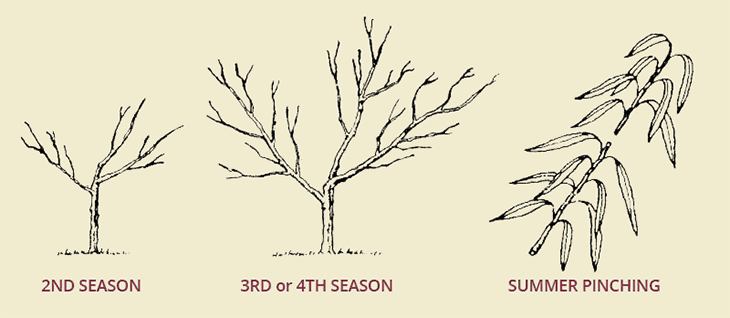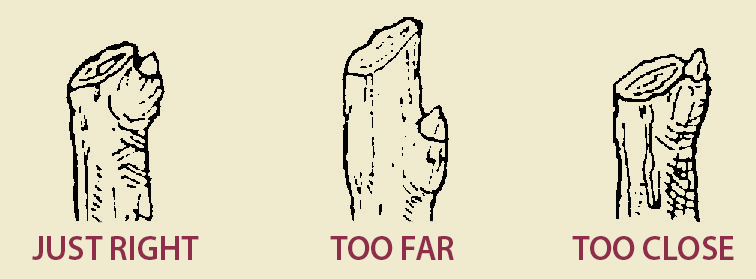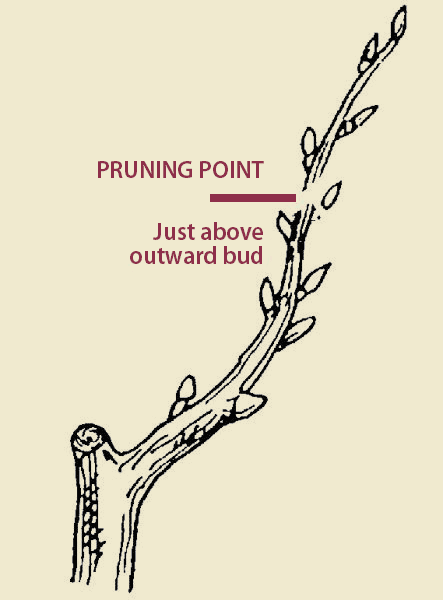I'm interested in this thread. I have a dwarf cherry tree that desperately needs pruning but I have NO idea how to do that. I also don't know when is the best time to prune? I had high hopes for the cherry tree bearing fruit (and it does) but the birds strip it clean before the cherries fully ripen and grow to size.
I watched a video in the past but it wasn't the proper time to prune and now I forgot how to do it.

https://www.starkbros.com/growing-guide/how-to-grow/fruit-trees/cherry-trees/pruning
Pruning Cherry Trees
Pruning is a very important part of proper cherry tree care and maintenance; however, many people think the task overwhelming. It doesn’t have to be! Keep these things in mind when you set out to prune your cherry trees:
- Have confidence in knowing that not everyone will prune the exact same way – including the experts.
- In the best interest of your tree, it is preferable to do some pruning versus no pruning.
- If an cherry tree is left unpruned, it may not become fruitful, it will not grow as well, and – in some cases – it may not be encouraged to grow at all.
- There are three main reasons you should prune your cherry tree: its survival, stimulation and shaping.
Survival
When your cherry tree is dug up from our fields to be shipped to you, and any time a tree is transplanted, the root ball loses many of its fine feeder roots. These hair-like, delicate roots are important to the process of absorbing moisture and nutrients in the soil. Pruning, in this instance, helps balance the top growth of your tree with the root system, giving the roots time to re-establish in your yard to support existing top growth and new growth.
When your bare-root cherry tree arrives from Stark Bro’s, our professionals have already pre-pruned your tree for you. Because of this, you do not need to prune it again at planting time. The only pruning necessary at that time would be to remove any broken or damaged branches and/or roots.
Plan to prune your cherry trees every year during their dormant season. In Zone 6 and north, you should wait until late winter. A good reference book, such as Pruning Made Easy, can be invaluable for providing additional visuals and answering questions you may have during the pruning process.
Stimulation
In addition to the survival benefits, pruning an cherry tree stimulates stronger, more vigorous growth from the remaining buds. After a single growing season, a cherry tree you prune will be bigger, with stronger branching than a similar, unpruned cherry tree.
Shape and Structure
Equally as important to the benefits above, your cherry tree needs to be pruned to provide a strongly structured shape. The natural shape a cherry tree takes on is not always the best for its maximum fruit production. Stark Bro’s cherry trees are pruned in the nursery row for proper shaping to get you started and corrective pruning must continue at home. If you keep up with your pruning and shaping each year, it will be a reasonable task mostly involving small, easy-to-heal cuts.
Always prune sweet cherry trees to a “Central Leader” or “Main Leader”. This structure encourages scaffold development, which supports the canopy and keeps the fruit from becoming overexposed to the sun and other elements. Pie/Sour/Tart cherry trees can be pruned to a modified central leader or more of an “Open Center” or “Vase-Shaped” structure. This structure keeps the canopy open to light and air circulation, which helps protect fruit and sustain quality.
Pruning Tips
- First dormant season (a year after you plant the tree): Remove the central leader and direct the tree growth toward three or four strong scaffolds. Choose branches that are evenly distributed around the trunk. Maintain about 6 inches of height between the scaffold branches, keeping the lowest branch at least 18 inches from the ground. Leave some small branches on the lower trunk to encourage trunk strength. Prune back scaffold branches to one-third of their length.
- Second dormant season: Prune back fast-growing new shoots but leave twig growth, which will be future fruit-bearing wood. Choose and encourage additional scaffolds, if needed.
- Third dormant season: Prune off any broken limbs or crossing branches, but don’t do any more major pruning until the tree has produced a good-sized crop.
- Mature-tree pruning: Once the basic shape of your cherry tree has been established, make your pruning decisions in line with which branches are bearing fruit. Most trees produce fruit on the previous year’s long stems and on short branches (spurs), each of which will bear fruit for several years. Each year, cut out a portion of the older fruiting wood to keep rejuvenating the tree. Prune back each of last year’s stems to half their length.
Pruning angles
Narrow, V-shape crotch angles in the limbs are an open invitation to disastrous splitting later on, particularly when your cherry tree is supporting a large fruit crop. For your tree’s branches, choose wide 10 o’clock and 2 o’clock angles.
Pruning to a bud
Make sharp, clean cuts close enough (about ¼-inch away from the next outward-pointing bud) so you won’t leave a clumsy stub that’s hard to heal over. Stay far enough above the bud so it won’t die back. Slant the cuts and the new growth will develop beautifully.
Every branch has buds pointed in various directions. Because you want vigorous new growth to spread out and away from the center of the tree, make your cut above a bud that’s aimed outward. These are usually located on the underside of the branch. This helps your cherry tree develop a solid structure, keeping it strong and productive for years.
Pruning Whips (Unbranched Trees)
Unbranched cherry trees are ideal if you want more control over which branches are allowed to develop — as you might in certain artful pruning styles like espalier. Prune whips back to 28- to 36-inches above the ground at planting time. After the new branches have grown 3 to 5 inches in length, select a shoot to become the leader and the rest become the tree’s scaffold limbs.
Off-season Pruning
Sometimes pruning needs to be done even when the season isn’t ideal. If a branch is broken by the wind or by a heavy load of fruit, emergency treatment is necessary. When taking action due to injury, prune to clean up any ragged edges; making a flush cut that leaves no stub.
It does not benefit the cherry tree to wait until dormancy to prune damaged, dead, or diseased limbs or to remove unwanted growth like suckers and watersprouts. These should all be completely removed as soon as you see them.
Fruit-Thinning
There are several good reasons to thin fruit:
- To reduce limb breakage
- Increase the size of the remaining fruit
- Improve fruit color and quality
- Stimulate floral initiation for next year’s crop
Home gardeners can effectively thin cherry trees by hand if needed. During the spring, cherry trees may will start to drop or abort underripe fruit. This is a natural process that allows the tree to mature the remaining crop load. If not corrected through thinning, cherry trees may bear biennially (fruits only every other year) or bear heavily one year, then bear a comparatively light crop the next year. Thinning may seem counterproductive in theory, but it really is a benefit to your cherry harvest in the long run.







